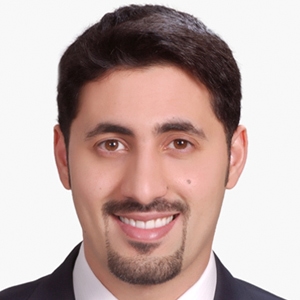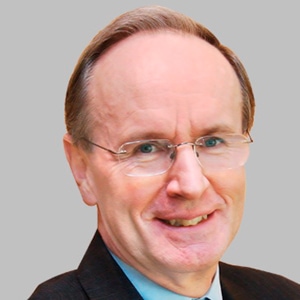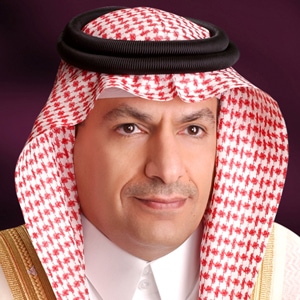The desert kingdom is moving forward with bold plans to boost the private sector.

With the worst of its financial pressures behind it, Saudi Arabia is forging ahead with its ambitious Vision 2030 development plan. Deputy crown prince Mohammed bin Salman bin Abdulaziz Al Saud, 31, is leading a far-reaching effort to modernize and diversify the economy. Increased revenue from rising oil prices could allow Riyadh to boost spending, enabling stronger growth in the non-oil economy.
As the world’s largest oil exporter, the kingdom stands to gain billions of dollars in additional revenue in 2017 as a result of the rise in crude prices. After using up a quarter of its foreign financial reserves in the last two years of weak oil prices, Saudi Arabia is narrowing its budget gap.
Still, the recovery in oil prices remains fragile; and the highly anticipated sale of a nearly 5% stake in Saudi Aramco, the national oil company, which could raise a record $100 billion, won’t be ready to launch until 2018.
Jamal Al Kishi, CEO for the Middle East and Africa at Deutsche Bank, and CEO of Deutsche Securities Saudi Arabia, says, “We are continuing to see strong interest and fund inflows into the local and regional economies, which have intensified since the launch of Saudi Arabia’s successful $17.5 billion sovereign bond.” Deutsche Bank named Al Kishi, a Saudi national, to head up its Middle East and Africa operations in February 2016.
Speaking at the German bank’s third annual investment conference in Jeddah in December, Al Kishi said: “This conference has cemented our view that tangible opportunities for our local and international clients exist in this dynamic market, despite ongoing global and regional challenges.”
Meanwhile, the proceeds of the bond issue, the largest ever by an emerging market country, are helping to relax tight liquidity conditions, giving the Saudi economy some breathing room.
“Liquidity has improved considerably since the sale of bonds by the government last October,” says Moath Alkhasawneh, CEO of Riyadh-based Falcom Financial Services.
CENTRAL BANK CASH INFUSION

The Saudi Arabian Monetary Authority, the central bank, poured $5.3 billion of time deposits into banks to ease the cash crunch. The Saudi Interbank Offered Rate dropped sharply from a seven-year high. Long-delayed government payments to contractors were finally made.
Alkhasawneh says Falcom Financial can help implement the economic reform plans: “First, we can grow our own operations and contribute to the non-oil economy; and second, we can direct our products and services to support the industries targeted under Vision 2030.”
“We see opportunity in sectors that have inefficiencies, such as healthcare and education in the public sector,” he adds. “We expect significant initiatives to privatize these sectors. [Public-private partnership] infrastructure and mining projects could be another source of opportunities.”
Saudi mining company Ma’aden recently announced plans for a $6.4 billion project to add a further three million metric tons of phosphate-production capacity over the next seven years.
When the non-oil and private sectors grow, the financial services industry is expected to grow as well, Alkhasawneh says. Vision 2030 encourages banks to allocate up to 20% of overall funding to small and medium enterprises. “Since the establishment of Falcom, we have mainly targeted SMEs; and we are currently working with a number of them to list on the proposed second market,” Alkhasawneh says. The bank will also be working closely with Riyadh’s new SME Authority, he says. The government plans business-friendly regulations, easier access to funding and international partnerships to promote entrepreneurship.

PRIVATIZATION PLANS
The privatization of state-owned assets will create significant investment opportunities for the private sector, including investment banks, Alkhasawneh says. “There are a number of privatization initiatives taking place at the moment, even before the listing of Aramco shares.”
David Dew, managing director at SABB, says banks will play a critical role in supporting and facilitating Vision 2030. “The Saudi banks have excellent capital and liquidity ratios,” Dew says. “I have no doubt they will support Vision 2030 in numerous areas, including SMEs, housing, infrastructure projects, long-term savings initiatives and facilitating inward investment and the ongoing development of the capital markets.”
TADAWUL KEEPS EXPANDING
Tadawul, the Saudi stock exchange, is the largest in the Middle East. It is continuing to expand and develop by adding new products and opening wider to foreign investors. The exchange recently announced plans to trade government bonds.
“There will be many opportunities for all parts of the financial sector, including commercial and investment banks as well as insurance companies,” Dew says. “Many sectors of the economy will grow, including petrochemicals, minerals and mining, local manufacturing, services, tourism and retail.”
The growth will be welcome following a rise in real GDP of only about 1.2% in 2016, down from 3.5% a year earlier. The government cut spending sharply in both 2015 and 2016, but the 2017 budget forecasts an 8% increase in spending.
The budget suggests that, following a significant improvement in public finances over the past few years, austerity is taking a breather, says Jason Tuvey, Middle East economist at Capital Economics. “This supports our view that the Saudi economy should embark on a gradual recovery in 2017,” Tuvey says.
However, austerity is likely to resume in 2018, Tuvey says. Riyadh will gradually cut subsidies and eventually tie domestic energy prices to international benchmarks. Poorer Saudis will receive monthly payments to compensate for the higher prices.
FEWER GUEST WORKERS

Meanwhile, the government is pressing ahead with Saudization, the replacement of foreign workers with Saudi nationals. The effort is being consolidated under the Ministry of Labor and Social Development. The penalty for noncompliance can be two years in prison and a hefty fine. The program has had some success in sectors that require skilled labor; but many Saudis shun work in the construction industry, the nation’s biggest employer.
Falcom Financial is already in compliance with the Saudization program, says Alkhasawneh. The bank has no difficulty in hiring and retaining Saudi nationals, he says. “Local talent is abundantly available, especially in the banking sector.”
SABB, which is associated with HSBC, already operates very successfully with a Saudization rate of 90%, says Dew. “We are proud that 20% of our employees are Saudi females,” he points out.
One of Vision 2030’s goals is to increase women’s participation in the workforce to 30%. It also seeks to lower the overall unemployment rate from 12% to 7%.
Saudis aged 20–29 make up 31% of the total working-age population, and these young people are joining the labor force in growing numbers, according to Fahad Alturki, chief economist and head of research at Jadwa Investment. “We believe that the recent Saudization of telecom shops appears to have positively impacted the growth in youth employment during the period from 2015 to the third quarter of 2016,” Alturki says.
The Ministry of Labor banned foreign workers from stores selling mobile phones and related equipment and services, effective in September 2016. In cooperation with the Technical and Vocational Training Corporation, the ministry trained 28,000 Saudis to take the place of expats in the telecom sector. Mohamed bin Salman’s vision is moving closer to reality.



